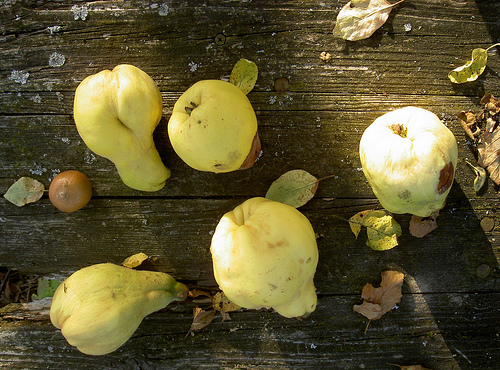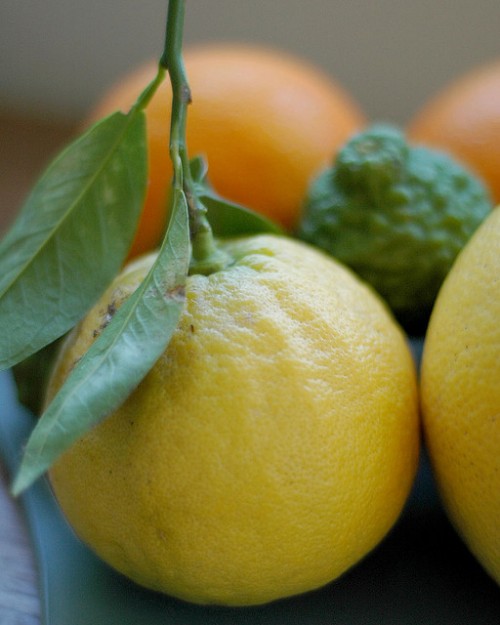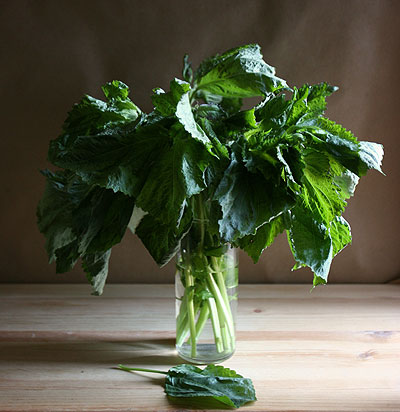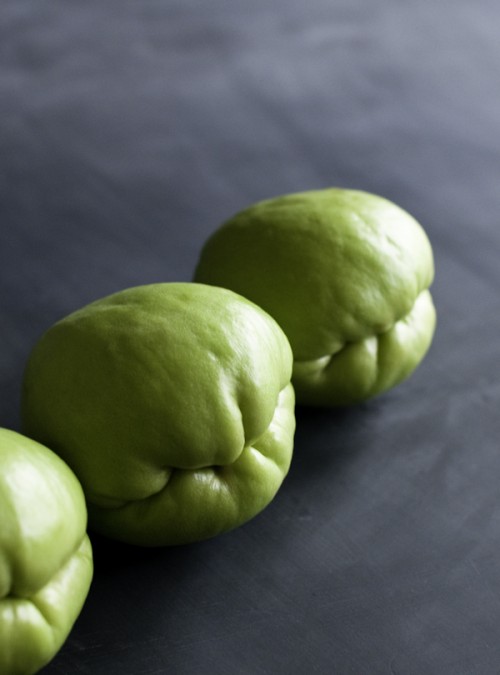Boston.com had an interesting article this morning about restaurant food trends. Top chefs in this area predicted what they see as the new wave of cooking. Local and seasonal is still a strong trend, but comfort food is beginning to wane (my kids will be so sad to see the Mac and Cheese trend pass!!). What I read though is still some heavy reliance on the garden and a heads up for what is to come. Do you love to try and copy what you had in a wonderful restaurant? Want to be able to serve what chefs are a creating, right from you own garden? Here is what you should be planting:

image by veloopity
Quince is becoming more popular in culinary uses. I have always thought of it as the exclusive accompaniment to Manchego cheese. (My first introduction to the fruit was given to me by the cheese-monger whose shop was few doors down from my first London flat). But now it is being added to stews – in Greek, Armenian, Turkish, Iranian and Moroccan cooking, quince is routinely used in meat and poultry dishes and in France there is a traditional homemade aperitif wine (which I would very much lit to try) in which white wine is infused with quince and vanilla, sweetened with sugar, and fortified with eau de vie.
A good variety of quince trees can be purchased form TyTy nurseries.

image by jen_maiser
Bergamot oranges are intensely sour, and are often used in jams, preserves, and other sweet dishes to counterbalance the sugar. The peel has rich deposits of oil which can be extracted for a variety of cooking and perfume uses but dried, the peels are used to add flavor and often are found in infusions like tea.
Bergamot oranges aromatic roots are thought to mask other nearby plants from pests that attack their roots, and so are sometimes grown as a companion in vegetable gardens. (Of course this probably only applies if live in a climate where you can grow this citrus in anything other than a container.)
If I happen to see some bergamot oranges this winter in my market, I plan to give Hungry Cravings’s Bergamot Orange Custard Cups a try.
You can buy Bergamot Trees from Grow Quest.

image from the kitchn
Shiso – also known as Perilla is a genus of annual herb that is a member of the mint family. It is easily self seeds and grows readily throughout the US. Many report that in a gopher addled garden, this is one plant that remains untouched. (right up my alley!)
Shiso has an unique taste and fragrance that’s a bit like a cross between mint and basil. It is found in Japanese, Korean, and Southeast Asian cuisines where it is often used as a wrapping for pickled vegetables, sushi or added to soups. It can also be ground up into a pesto sauce (recipe by muffin top) that can be served with regular noodles or tossed with some sesame seed oil and soba noodles. As a cocktail try the shiso julep.
Seeds are available from Botanical Interests.

image by minimallyinvasivenj
In addition to an increased interest in Asian flavors, Boston chefs also think that (at least around here) there will be a deepening interest in Mexican Food. (rejoice!). Knowledge of this cuisine will deepen beyond the Chipotle offerings and there will be an increase in the use of jicama, tomatillos, cilantro, nopales and chayote.
Chayote (or mirliton to those in Louisiana) goes by many names, but is a vegetable preferred by many Asian counties, as well as South Americans. They are also known as christophine to Caribbeans, chocho to Madeirans, pipinella to Italians, and pipinola to Hawaiians. The plant’s scientific name is Sechium edule, but most North Americans call them “vegetable pears.”
You need alot of space to grow these vines and you can’t plant them from seed. You must find a chayote fruit and plant the whole thing early in the spring (look in markets in the fall and then keep them in a dark root cellar type place until planting time). Many cultures have found that if the harvest of chayote is abundant, it is cheaper to use it as food for pigs or cattle than the usual commercial feed.
Try them in soup, stuff them, or put them in casseroles or salads but I am particularly interested to try Minimally Invasive‘s mirliton pickles to add to Bloody Mary’s.
Read more at mother earth news.
Hello Garden Maker!
You really can be your own garden designer and I can help. Get access to my free resource library full of helpful tools, sources, plant lists and more!
!
!
Something went wrong. Please check your entries and try again.
We will be taking some of your tips here and planting from seed in our new garden planters
Please enjoy my sisters uses of quince- we especially enjoyed the Quintini!! ; >
http://theforagersfeast.blogspot.com/2010/11/another-use-for-under-appreciated.html
http://theforagersfeast.blogspot.com/2010/11/quincidentally.html
and following commentary by culinary anthropologist, Deb Duchon.